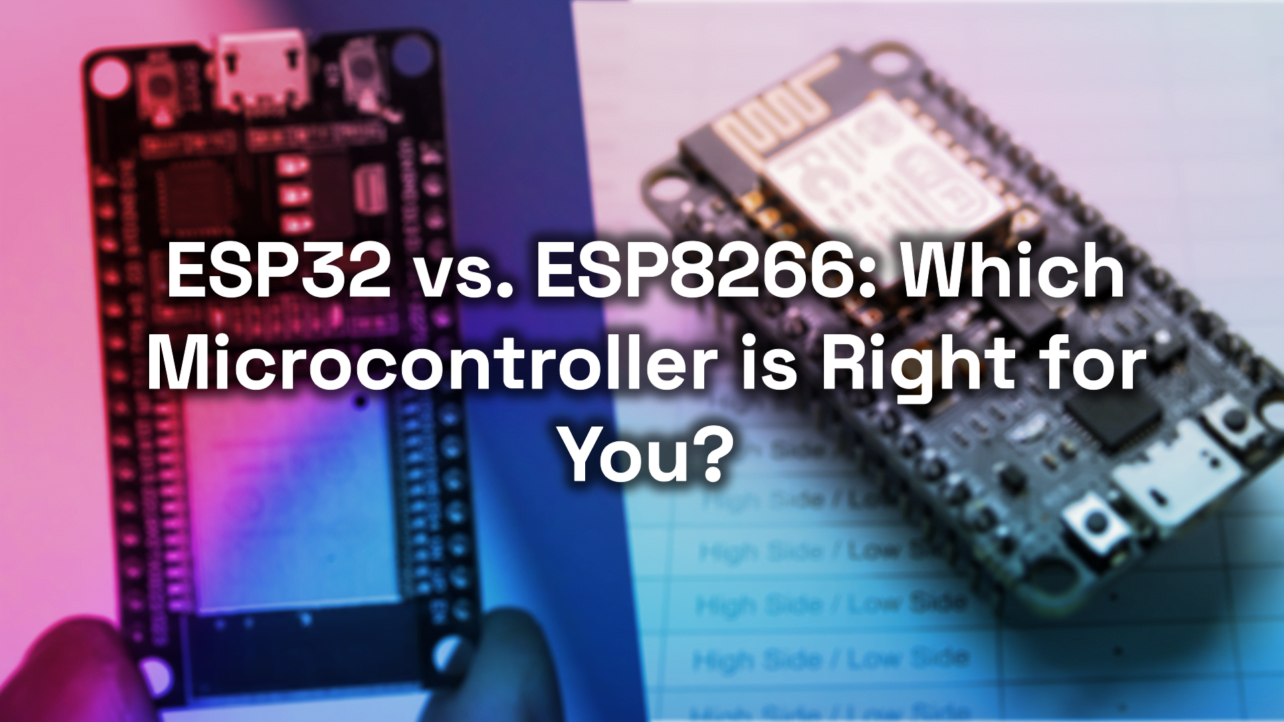As an IoT enthusiast, I’ve had the pleasure of working with both ESP32 and ESP8266 microcontrollers on numerous projects. These popular chips have become the go-to choice for many developers due to their built-in Wi-Fi capabilities, making them ideal for Internet of Things (IoT) applications. In this article, I’ll compare these two powerhouses to help you decide which one is best suited for your next project.
The Contenders
Let’s start by introducing our two contenders:
The ESP32 is the newer and more powerful option. It boasts a dual-core processor, both Bluetooth and Wi-Fi capabilities, and an extensive array of peripherals. This versatility makes it an excellent choice for complex IoT applications that require high processing power and diverse connectivity options.
On the other hand, the ESP8266 is the tried-and-true veteran. It has been a favorite among makers and IoT developers for years, thanks to its simplicity, Wi-Fi capabilities, and remarkably low cost. While it may not have all the advanced features of the ESP32, it’s more than capable of handling many IoT tasks efficiently.
Feature Showdown
Now, let’s dive into the key differences between these two microcontrollers:
Processing Power & Memory
The ESP32 takes a clear lead in this category. It features a dual-core processor that can run up to 240 MHz, 520 KB of SRAM, and 448 KB of ROM. In contrast, the ESP8266 has a single-core processor running at 80 MHz (though it can be overclocked to 160 MHz), 80 KB of SRAM, and 64 KB of ROM.
I noticed this difference when working on a smart home hub. The ESP32’s superior processing power allowed me to handle multiple sensor inputs and control various devices simultaneously without any lag or performance issues.
Connectivity
While both modules support Wi-Fi 802.11 b/g/n, the ESP32 goes a step further by including Bluetooth capability. This can be a game-changer for certain projects. For instance, when I built a wearable fitness tracker, the ESP32’s Bluetooth functionality allowed for easy syncing with a smartphone app – something that would have been much more challenging with the ESP8266.
Peripherals & Interfaces
Here’s a quick comparison of the peripherals and interfaces offered by each:
ESP32:
- 34 programmable GPIO pins
- 18 ADC channels
- 2 DAC channels
- 16 PWM channels
ESP8266:
- 17 GPIO pins
- 1 ADC channel
- No built-in DAC
- PWM available through software implementation
I found this difference particularly useful when working on an industrial monitoring system. The ESP32’s numerous GPIO pins and ADC channels made it easy to interface with multiple sensors without needing additional hardware.
Power Consumption
Both modules have power-saving features, but the ESP32 offers more sophisticated power management options. Its deep sleep current can be as low as 10µA, compared to the ESP8266’s 20µA. This makes the ESP32 a better choice for battery-powered projects, as I discovered when building a remote weather station that needed to operate for extended periods on a single battery charge.
Cost
The ESP8266 is the budget-friendly option, with development boards like the NodeMCU typically priced between $3 to $5. This makes it ideal for cost-sensitive projects or those requiring multiple units. The ESP32, while pricier at $6 to $12 per board, offers more bang for your buck in terms of processing power and features.
Choosing the Right Platform
So, which one should you choose? Here’s my advice based on different use cases:
Choose the ESP32 if you’re working on complex IoT systems or industrial applications that require high processing power, Bluetooth connectivity, or advanced peripherals. It’s also the better choice for projects where power efficiency is crucial. I’ve used it successfully in projects like smart home automation systems with voice control and multiple connected devices.
Opt for the ESP8266 if you’re working on simpler IoT projects, especially if you’re on a tight budget or need a smaller form factor. It’s perfect for projects that primarily need Wi-Fi connectivity, like a remote temperature monitoring system or a simple smart home device. I’ve found it ideal for projects like a Wi-Fi-enabled plant watering system or a basic home energy monitor.
Remember, both platforms have strong community support and can be programmed using popular tools like the Arduino IDE or Espressif’s IoT Development Framework (ESP-IDF). The ESP8266 has been around longer, so it has a slightly larger collection of existing projects and resources, which can be beneficial for beginners or those working on well-established IoT applications.
In conclusion, both the ESP32 and ESP8266 are excellent microcontrollers for IoT projects. Your choice will ultimately depend on your project’s complexity, required features, power consumption needs, and budget constraints. Whether you’re building a simple Wi-Fi-enabled sensor or a complex multi-device smart home system, one of these modules is sure to fit the bill.
Have you worked with either of these microcontrollers? I’d love to hear about your experiences and projects in the comments below!


1 comment